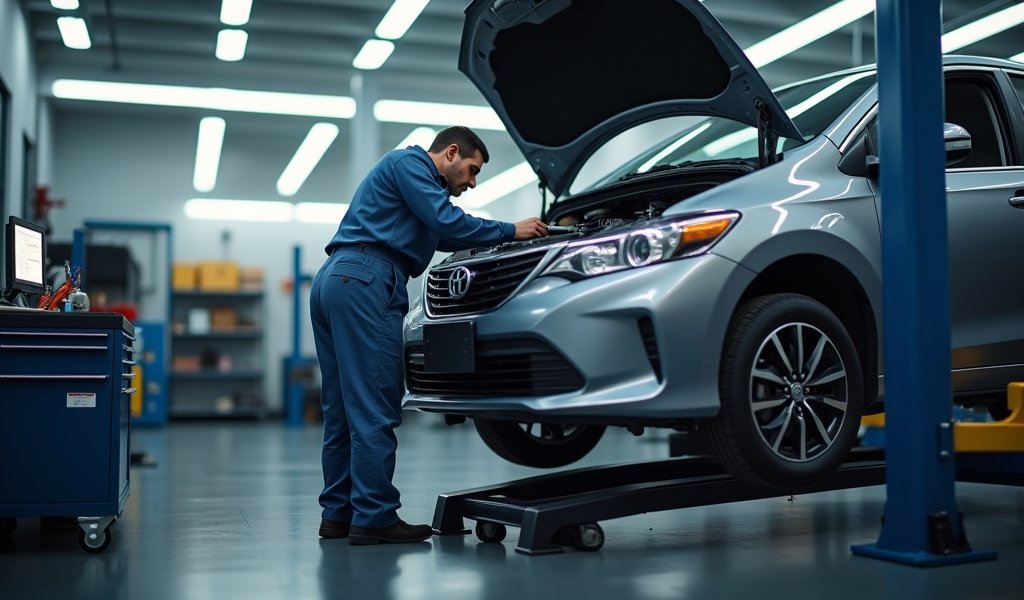Overview
This article provides seven practical fixes for car heater problems, covering everything from thermostat replacement and cooling system flushes to heater core repairs and electrical troubleshooting. It explains how car heating systems work, helps readers identify common issues through specific symptoms, and offers guidance on which repairs are suitable for DIY versus professional attention.
Table of Contents
- Understanding Your Car’s Heating System
- Common Signs of Heater Problems
- Fix #1: Check and Replace the Thermostat
- Fix #2: Flush the Cooling System
- Fix #3: Repair or Replace the Heater Core
- Fix #4: Fix Blower Motor Issues
- Fix #5: Check and Replace Heater Control Valves
- Fix #6: Clear Blocked Heater Ducts
- Fix #7: Address Electrical Problems
- DIY vs. Professional Repair
- Preventative Maintenance Tips
- Conclusion
- Frequently Asked Questions
There’s nothing worse than cranking up your car’s heater on a frosty morning only to be greeted by a blast of cold air. Trust me, as someone who’s spent 20 years under the hood, I’ve seen the frustration in drivers’ eyes when their car heater fails right when they need it most.
Car heaters aren’t just about comfort—they’re essential safety equipment that keeps your windshield clear and your mind alert during winter driving. The good news? Many heater issues can be diagnosed and fixed without draining your wallet at the repair shop.
In this guide, I’ll walk you through seven proven fixes that have saved my customers from the cold over the years. Whether you’re handy with tools or just want to understand what’s happening before talking to your mechanic, these solutions will help you get your car’s heating system back in business.
Understanding Your Car’s Heating System
Before we dive into repairs, let’s break down how your car’s heater actually works. Unlike your home heating system, your car doesn’t generate new heat—it recycles heat from your engine.
Here’s the simple version: as your engine runs, coolant circulates through it, absorbing heat. When you turn on the heater, this hot coolant flows through something called the heater core (think of it as a small radiator) inside your dashboard. A blower motor pushes air through this heater core, warming it up before blasting it into your cabin.
The main components include:
- Heater core: Transfers heat from coolant to cabin air
- Blower motor: Pushes air through the system
- Thermostat: Controls coolant flow and temperature
- Control valves: Regulate how much hot coolant enters the heater core
- HVAC controls: The knobs or buttons you use to set temperature
Understanding this basic flow helps pinpoint where things might go wrong. If any part of this chain fails, you’ll feel it immediately in the form of cold air—or no air at all.
Common Signs of Heater Problems
Your car gives clear signals when its heating system is struggling. Here are the telltale signs something’s wrong:
- Cold air blowing from vents (the most obvious sign)
- Weak airflow, even on highest fan setting
- Sweet smell inside the cabin (often indicates coolant leak)
- Windows that stay foggy or won’t defrost
- Engine temperature running hotter than normal
- Wet passenger-side floor mats
- Temperature controls that seem unresponsive
Pay special attention to that sweet smell—that’s the aroma of ethylene glycol (coolant), and it’s a red flag. It’s not only annoying but potentially harmful if it’s entering your cabin.

Fix #1: Check and Replace the Thermostat
Your thermostat is the gatekeeper of heat in your vehicle. This small, inexpensive part controls coolant flow through your engine. When it gets stuck open, your engine never reaches proper operating temperature—meaning your heater blows lukewarm at best.
How to tell if your thermostat is the culprit:
- Engine takes forever to warm up (or never seems to)
- Temperature gauge stays in the cold zone
- Heater performance improves slightly after long drives
Replacing a thermostat is relatively straightforward on most vehicles and can be a great DIY car repair you can handle at home. You’ll need basic hand tools, a replacement thermostat specific to your vehicle (usually $10-30), and about an hour of time.
Here’s the basic process:
- Make sure your engine is completely cool
- Locate the thermostat housing (typically where the upper radiator hose connects to the engine)
- Remove the housing bolts and carefully extract the old thermostat
- Note the orientation—the new one must go in exactly the same way
- Clean the mounting surfaces thoroughly
- Install the new thermostat with a new gasket
- Refill coolant and check for leaks
This simple fix often solves heating problems and improves engine efficiency to boot. According to research from CarParts.com, a stuck thermostat can reduce fuel economy by up to 10%—so you’re saving gas money too!
Fix #2: Flush the Cooling System
Over time, your cooling system accumulates rust, scale, and debris that can block coolant flow to your heater core. Think of it like cholesterol in arteries—eventually, things just don’t flow properly.
Signs you need a flush:
- Rusty or discolored coolant
- Gradual decline in heater performance over months/years
- Coolant that’s beyond its replacement interval (usually 30,000-50,000 miles)
- Gritty residue in the coolant reservoir
Flushing your coolant system is straightforward but a bit messy. You’ll need:
- Fresh antifreeze/coolant (specific to your vehicle)
- Distilled water
- A drain pan (at least 2-gallon capacity)
- Basic hand tools
- A funnel
- Radiator flush solution (optional but recommended)
The process involves draining the old coolant, running distilled water through the system until it runs clear, then refilling with the proper coolant mix. Take your time with this one—rushing can introduce air pockets that cause heating issues.
Pro tip: While the system is drained, feel the radiator hoses. If they’re soft, spongy, or cracked, replace them now. A hose failure can leave you stranded and cause engine damage.
Fix #3: Repair or Replace the Heater Core
The heater core is the heart of your heating system. When it gets clogged internally or develops leaks, no amount of thermostat-replacing or system-flushing will fix your heat.
Warning signs of heater core problems:
- Sweet smell inside the cabin (strongest near dashboard)
- Foggy windows that won’t clear
- Coolant puddles under the passenger side dashboard
- Engine losing coolant with no visible external leaks
- Slimy film on the inside of your windshield
I won’t sugarcoat it—heater core replacement is usually a major job. On most vehicles, it requires removing part or all of the dashboard to access. Labor costs typically run $500-900 for this job alone.
However, before replacing the heater core, try flushing it specifically. This involves disconnecting the heater hoses and forcing water through the core in the reverse direction of normal flow. Sometimes this dislodges blockages and saves you from replacement.
If replacement is necessary, consider whether it’s a job you want to tackle. While the parts themselves aren’t expensive ($100-300), the labor is intensive. The J.D. Power estimates professional heater core replacement typically costs between $564 and $927 for most vehicles.
Fix #4: Fix Blower Motor Issues
You might have plenty of heat, but if the blower motor isn’t working, that warm air isn’t going anywhere. The blower motor is the fan that pushes air through your vents.
Signs of blower motor problems:
- No airflow from vents (most obvious sign)
- Fan works on some speeds but not others
- Strange noises when fan is running
- Fan runs constantly regardless of settings
Often, the problem isn’t the motor itself but the blower motor resistor—a small electronic component that controls fan speeds. When this resistor fails, you typically lose some or all fan speeds.
To check the blower motor:
- Locate the blower motor (usually under the passenger side dashboard or in the engine compartment on the passenger side)
- Check fuses first—blown fuses are a common and easy fix
- If fuses are good, inspect the electrical connector for corrosion or damage
- If the motor has power but doesn’t run, it likely needs replacement
Replacing a blower motor resistor is usually straightforward—a 15-30 minute job on most vehicles costing $20-50 for parts. The motor itself is more expensive ($50-150) and sometimes more challenging to access, but still doable for a weekend mechanic.

Fix #5: Check and Replace Heater Control Valves
The heater control valve is like a faucet for your car’s heating system. It regulates how much hot coolant flows through your heater core. When it fails—either stuck open or closed—your temperature control goes haywire.
Signs of a bad heater control valve:
- Can’t control temperature (stuck on hot or cold)
- Intermittent heating (works sometimes, not others)
- Engine overheats when heater is on
- Temperature changes without adjusting controls
Heater valves come in two main types: vacuum-operated and electronically controlled. The vacuum type uses engine vacuum to move a diaphragm, while electronic ones use small motors. Both can fail, but diagnosis differs slightly.
For vacuum valves, check for vacuum leaks by inspecting the lines. You might hear a hissing sound, or the engine might idle roughly. For electronic valves, you’ll need to check for proper power and ground connections.
Replacing the valve is generally straightforward:
- Locate the valve (typically attached to the firewall near the heater hoses)
- Drain some coolant to prevent spillage
- Remove hose clamps and disconnect hoses
- Remove any mounting hardware and the electrical/vacuum connections
- Install the new valve in the same orientation
- Reconnect everything and refill coolant
This job typically costs $30-150 in parts and takes about an hour. It’s well worth doing—a properly functioning heater valve not only improves comfort but can prevent engine overheating issues.
Fix #6: Clear Blocked Heater Ducts
Sometimes, the heat is there but can’t reach you due to blockages in the ductwork. This is especially common in vehicles that spend time parked outdoors or in rural areas.
Signs of blocked ducts:
- Uneven heating (some vents work, others don’t)
- Weak airflow despite fan running at high speed
- Musty or moldy smell from vents
- Odd noises when changing vent settings
The most common blockage sources are:
- Leaves and debris in the exterior air intake (usually at the base of the windshield)
- Rodent nests inside ductwork (mice love warm, sheltered spaces)
- Collapsed or damaged flexible ducts
- Severely clogged cabin air filters
Start by checking and replacing your cabin air filter—this simple maintenance task is often overlooked. The filter is typically located either under the dashboard, behind the glove box, or under the hood near the windshield.
For deeper duct cleaning:
- Remove debris from the exterior air intake
- Use compressed air to blow out accessible ducts
- Consider removing accessible duct sections for cleaning
- For severe cases, some shops offer duct cleaning services
Prevention is key here—keep your cabin air filter fresh (typically every 15,000-30,000 miles) and consider parking in sheltered areas during fall when leaves are abundant.
Fix #7: Address Electrical Problems
Modern heating systems rely heavily on electrical components and sensors. When these fail, your heater can behave erratically or stop working entirely.
Common electrical issues include:
- Blown fuses
- Failed temperature blend door actuators
- Broken switches in the control panel
- Damaged wiring (often from previous repairs)
- Failed temperature sensors
Start with the simplest check—your fuse box. A blown HVAC fuse can shut down your entire heating system. Your owner’s manual will show fuse locations and purposes.
For more complex electrical issues:
- Use a test light or multimeter to check for power at components
- Listen for clicking sounds when changing settings (indicates actuators are trying to work)
- Check if your temperature setting changes register on the vehicle’s computer (if equipped with diagnostic capability)
- Look for obvious wiring damage, especially near moving parts
While some electrical repairs are straightforward (like replacing a blend door actuator), others require specialized diagnostic equipment. Don’t hesitate to consult a professional for complex electrical issues—improper repairs can damage sensitive electronics.
According to AAA’s automotive research, electrical issues account for nearly 30% of all heating system failures in modern vehicles.
DIY vs. Professional Repair
Knowing when to grab your toolbox versus when to call a pro can save you time, money, and frustration. Here’s my rule of thumb after decades in the business:
Good DIY candidate repairs:
- Thermostat replacement
- Cooling system flush
- Blower motor resistor replacement
- Fuse replacement
- Cabin air filter replacement
Better left to professionals:
- Heater core replacement
- Dashboard removal procedures
- Complex electrical diagnosis
- Jobs requiring specialized tools
- Anything involving the air conditioning system (which shares components)
Be realistic about your skills, tools, and time. A professional might charge $100 per hour, but they’ll complete in one hour what might take you five—plus, their work typically carries a warranty.
That said, many heating system repairs are perfect weekend projects that can save you hundreds in labor costs. Just be sure to research thoroughly and have a backup transportation plan in case things take longer than expected.
Preventative Maintenance Tips
An ounce of prevention is worth a pound of cure—especially when it comes to your car’s heating system. These simple maintenance steps will keep you warm for winters to come:
- Change your coolant according to your manufacturer’s schedule (typically every 30,000-50,000 miles)
- Replace your cabin air filter annually or more often if you drive on dusty roads
- Run your heater occasionally during summer months to keep components moving
- Address unusual temperature gauge readings promptly—they often signal cooling system issues that will affect your heater
- Fix small leaks before they become big problems
- Clean debris from your exterior air intake (at the base of your windshield) seasonally
The most important maintenance tip? Pay attention to changes in your heating system’s performance. That slight reduction in heat output or that new noise when you turn the fan on high—these early warning signs give you time to address issues before you’re left shivering during a snowstorm.
Conclusion
A functioning heater isn’t just about comfort—it’s about safety and reliability during the coldest months. By understanding how your car’s heating system works and recognizing common failure points, you can often diagnose and repair issues before they leave you in the cold.
Remember that many heating problems stem from cooling system issues—they’re two sides of the same coin. Regular maintenance of your vehicle’s cooling system is the best preventative medicine for your heater.
Whether you choose to tackle repairs yourself or leave them to a professional, being informed about the seven common fixes we’ve discussed puts you in the driver’s seat when making decisions about your vehicle’s care.
Stay warm out there, and remember—a little preventative maintenance goes a long way toward trouble-free winter driving.
Frequently Asked Questions
Why is my car heater blowing cold air?
Your car heater blows cold air most commonly due to low coolant levels, a failed thermostat, clogged heater core, or a malfunctioning blend door actuator. Check your coolant level first, as this is the simplest and most common cause.
How much does it cost to fix a car heater?
Car heater repair costs vary widely from $20 for a simple fuse replacement to $1,000+ for a heater core replacement. Most common repairs like thermostat replacement or cooling system flush fall in the $100-300 range including parts and labor.
Can I drive with a broken car heater?
You can technically drive with a broken heater in warm weather, but it creates safety hazards in cold conditions due to window fogging and driver discomfort. Additionally, some heater problems indicate larger cooling system issues that could lead to engine damage if ignored.
Why does my car heater smell sweet when running?
A sweet smell from your car’s heater indicates leaking coolant, typically from the heater core inside your dashboard. This is a serious issue requiring prompt attention as coolant vapors are harmful to breathe and the leak will eventually cause engine overheating.
How often should I flush my cooling system?
You should flush your cooling system according to your vehicle manufacturer’s recommendation, typically every 30,000-50,000 miles or 3-5 years. Regular flushes prevent corrosion and buildup that can affect both your engine cooling and cabin heating systems.


Pingback: Car Heater Repair Guide: 7 Proven Fixes - knowsyourcar.com